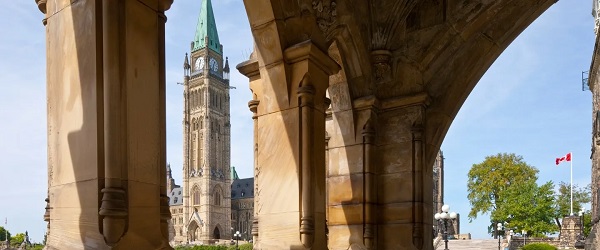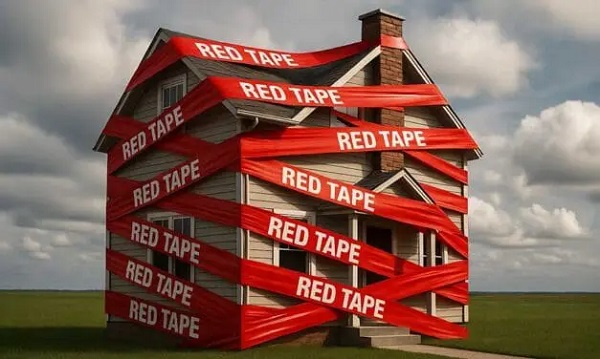Alberta
A Provincial Police That Serves Alberta
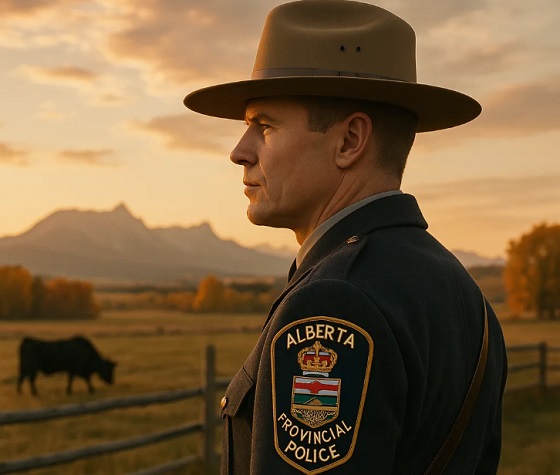
 Haultain Research
Haultain Research  Marco Navarro-Génie
Marco Navarro-Génie
The story of an RCMP sergeant decrying traditional values as a gateway for extremism should be more than troubling. It should be fuel for every Albertan committed to establishing a provincial police force that reflects who we are, not what Ottawa wishes us to become.
Alberta has lately endured serious RCMP overreach. We remember the door-kicking in Fort McMurray, and the same abusive aggression repeated during the 2013 floods in High River. And few will forget the politically fabricated claims made against the Coutts Four. These weren’t isolated incidents. They are expressions of an institutional culture unmoored from Alberta’s interests, unaccountable to its people, and ultimately indifferent to the liberties Albertans value.
The RCMP was not always this way. It was once a respected force rooted in Western traditions, created to keep peace and order on a rugged frontier—an institution with a sense of duty to the West it served. But that era has long passed. The RCMP today is a different creature—centralized, politicized, and openly hostile to the values it was once meant to protect.
This is why the push for an Alberta provincial police force must not be dismissed as symbolism or empty political gesture.
Let us be clear: Alberta doesn’t need anyone’s permission to establish its police force. Section 92 of the Constitution Act, 1867 grants Alberta the authority to create its police force. Quebec and Ontario have done so. Alberta is equally entitled, despite the centralizing delusions that drift through Ottawa and a few bon pensants among the New Democratic opposition.
Still, entitlement alone is not enough. Execution matters.
There is a quiet triumphalism in some circles—a belief that simply calling a force “Alberta Provincial Police” will make it better. But geography never guarantees virtue. Unless Albertans are intentional, Alberta risks reproducing the same policing culture that has failed us, only with new decals and a provincial seal.
The story of Jeremia and Dominic Leussink five years ago illustrates the danger. The two brothers, farmers near Didsbury, were trying to do their work. After a 16-hour shift, Jeremia, then 18, was driving a tractor down Highway 2A. He entered a police checkstop through a ditch, which is standard practice on rural roads. Alberta Sheriffs didn’t use discretion. They used force. Jeremia was dragged from the tractor, slammed into the gravel, and punched in the neck and face. Dominic, who arrived soon after, was detained when he attempted to prevent damage to the machinery. Charges were laid and then quietly dropped, but not before the boys endured physical harm and a humiliating brush with the law.
This wasn’t the RCMP. This was a provincial outfit. And it reminds us that the problem isn’t just federal control—the culture and traditions of a police force matter.
This brings us to a deeper question: What kind of police culture should Alberta build?
Alberta is not a generic Canadian province. As its motto declares, we are strong and free. Our strength lies in our culture. We prize private enterprise and property not as a luxury but as the bedrock of freedom. We value liberty—not only the freedom to speak, worship, associate, and dissent, but the freedom from the state when it seeks to impose itself where it doesn’t belong. These convictions are not ornamental. They are essential to the Alberta way of life.
The Canadian Charter of Rights and Freedoms, notably, does not even mention property rights. That tells you everything about the central Canadian view of liberty. And it explains why so many of our freedoms—property, expression, conscience—are eroding under the bureaucratic thumb of progressive ideology that dominates Laurentia.
This isn’t theoretical anymore. It’s operational.
The remarks by RCMP Staff Sergeant Camille Habel about “traditional values” being a path to extremism are not fringe views. They reflect a new cultural orthodoxy now embedded in federal institutions. And they make it more urgent that Alberta create its force, one grounded in law and in culture. That means training Alberta’s officers in accordance with Alberta’s distinct values.
To get there, we must be deliberate.
We should begin by identifying the core virtues that must define an Alberta police force. First, it must be culturally rooted. Officers should not merely patrol Alberta, but belong to it, understanding the values, customs, and expectations of the people they serve. Second, it must train law enforcement personnel to make independent judgments: those capable of thinking clearly under pressure, guided not by rigid directives but by the principles of justice. Third, it must embody moral clarity—a refusal to chase ideological bogeymen while real crimes fester. Fourth, it must be directly accountable, not to Ottawa ideals, not to abstract policy frameworks, but to Alberta communities and Alberta law. And finally, and most critically, it must protect Alberta’s distinct culture, which includes our deep concern for individual freedom, strong property rights, and a form of government that respects and serves its citizens as individuals.
But virtues alone won’t build a force. Institutions do that.
Founding a new institution requires the founding of new training ways. An Alberta Provincial Police would need a new, purpose-built academy curriculum, distinct in philosophy, to ensure a shift in policing culture, not just in uniforms and reporting lines. This new academy must include training in Alberta history, culture (and place Alberta law in its context), not as window dressing, but as the foundational context for service. The Ministry of Public Safety must understand that setting the DNA of a new force is not optional—it is paramount. No amount of administrative rebranding will protect Albertans if the force is trained in the same ideological water that floods federal institutions.
These are not theoretical ideals. They are the qualities that allow a free people to remain free. And if Alberta is to continue building something worthy, we might look—not uncritically, but carefully—at the best of what police forces beyond Ottawa’s offer.
Take the Texas Rangers, for example. While their early record contains severe stains, the Rangers in their more refined tradition offer a model of law enforcement that is local, deeply serious about justice, and wary of distant interference. They have long seen themselves not as agents of Washington, but as guardians of the Texan way of life. That distinction matters. It makes them accountable to the people they served, rather than to federal fashions or shifting ideological norms in Washington.
The old Ranger saying “One riot, one Ranger” was not a boast but an expectation. It meant that each officer was expected to act with competence, courage, and restraint. No sprawling command structure. No ten layers of liability-avoidance. Just principled responsibility, exercised by someone embedded in the land she served.
And that made all the difference.
What made the Rangers distinct was not their tactics, but their cultural placement. They thought like Texans because they were Texans. They acted with authority because their authority came from below, not above. They didn’t simply enforce laws; they protected a way of life.
That is the kind of institutional culture Alberta must create, one that sees policing as a defence of community, liberty, and order, not as an arm of political engineering designed elsewhere, even in Edmonton. Not a bureaucracy in new colours, but a corps of officers sworn to Alberta first.
If done well, an Alberta Provincial Police will be a shield against federal overreach, Laurentian cultural hostility, and the creeping conformity of federal institutions. If done poorly, it will be a clone of the RCMP with all its woke condescension toward Western rurals and independent thinkers.
Alberta cannot afford to get this wrong.
Subscribe to Haultain Research
For the full experience, and to help us bring you more quality research and commentary, please upgrade your subscription.
Alberta
Premier Smith directs ministers to grow economy and create jobs
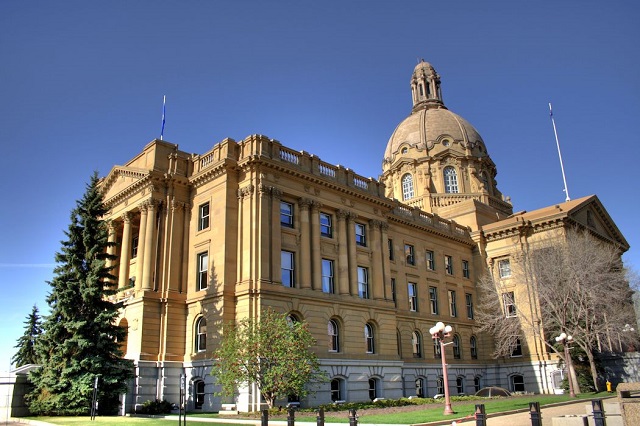
Premier Smith has issued new mandate letters to several ministers. Minister of Jobs, Economy, Trade and Immigration Joseph Schow will push for Alberta to set its own immigration levels and expand youth job programs. Minister of Forestry and Parks Todd Loewen will strengthen wildfire protections and open more recreation opportunities. Minister of Tourism and Sport Andrew Boitchenko will expand year-round tourism and implement the Fairness and Safety in Sport Act to ensure women and girls have the opportunity to compete in biological female-only divisions. Minister of Arts, Culture and Status of Women Tanya Fir will expand Alberta Day, showcase the provincial flag more prominently, and improve supports for survivors of domestic violence.
Alberta’s Minister of Jobs, Economy, Trade and Immigration Joseph Schow, Minister of Forestry and Parks Todd Loewen, Minister of Tourism and Sport Andrew Boitchenko and Minister of Arts, Culture and Status of Women Tanya Fir have been tasked with promoting Alberta’s industries, driving investment, creating jobs and increasing prosperity for people who live in Alberta.
The new mandate letters are focused on delivering the programs and supports that matter to Albertans, Alberta companies, workers and the economy, while maintaining Alberta as the best place to live, work and raise a family.
Through the commitments outlined in each mandate letter, Alberta’s ministers will deliver results, strengthen communities and build a future rooted in prosperity, opportunity and responsible governance.
“A resilient and diversified economy is one of our top priorities and what Albertans expect from their government. We are creating the conditions for workers and industries in Alberta to keep growing – by supporting investments where they are needed and reducing barriers that stifle innovation and expansion.”
Jobs, Economy, Trade and Immigration
The Premier tasks Minister Joseph Schow with:
- Using every legal and policy tool to gain greater provincial authority over immigration, setting sustainable levels that prioritize economic migrants, and ensuring young Albertans have access to jobs. Expanding programs to reduce youth unemployment, developing talent pipelines and helping newcomers integrate successfully.
- Attracting major domestic and international investment by coordinating with partners, reviewing and improving incentive programs, increasing the Investment and Growth Fund and aligning investment attraction agencies with Alberta’s long-term economic goals.
- Defending Alberta’s interests in federal trade negotiations, implementing and managing trade agreements and supporting Alberta businesses to expand into new global markets through trade missions and services.
- Collaborating with ministries and partners to expand airport capacity and connectivity, supporting value-added forestry initiatives, growing Alberta’s cultural industries and securing public and private investment in defense-related and other strategic infrastructure projects.
“Alberta continues to stand out as the best place to do business. Our government’s work is leading to a stronger economy, more jobs and more opportunity for those who call Alberta home. I am honoured to accept this mandate given to me by Premier Smith to continue this growth for Alberta, keeping our province strong and free.”
Forestry and Parks
The Premier tasks Minister Todd Loewen with:
- Securing a federal partnership for wildfire mitigation on federal lands, especially in national parks, and advancing proactive fire management through strategic harvesting, fuel reduction, expanded FireSmart programs, new technology and modern firefighting equipment.
- Finalizing and implementing the new strategy to expand public access to natural spaces responsibly, while continuing to add new campsites, trails and recreation opportunities, and upgrading infrastructure in high-traffic areas like Kananaskis, Canmore and Crowsnest Pass.
- Remaining committed to a common-sense approach to maintain healthy wildlife populations and guide ministry practices related to fish and game management.
- Proposing a value-added tax incentive for forestry products and enabling more public land use opportunities through private and community partnerships.
“The beautiful outdoors of our province feels like home for many Albertans. Our government is continuing its work to make sure that the land we have all grown up loving will stay strong for Albertans today and for future generations”
Tourism and Sport
The Premier tasks Minister Andrew Boitchenko with:
- Maintaining progress on expanding opportunities for sustainable year-round tourism in the Alberta Rockies with all-season resorts.
- Ensuring the full implementation of the Fairness and Safety in Sport Act, using every legal and constitutional tool available to defend Alberta athletes and guarantee a level playing field.
- Respecting taxpayer dollars by creating a new provincial bidding policy to oversee future bids to host international and national sport events and working with Treasury Board and Finance to ensure visitors contribute fairly to taxes and fees.
- Continuing to work with Travel Alberta to unleash Alberta’s potential and reach the ambitious goal of $25 billion in visitor spending.
“Premier Danielle Smith has made my mandate clear; grow Alberta’s visitor economy and ensure our province continues to be the best place to live, work, visit and play. We have already had great success, and I am excited to keep that ball rolling as we work to strengthen Alberta’s tourism and sport sectors. Albertans elected us to get the job done and that’s exactly what I intend to do.”
Arts, Culture and Status of Women
The Premier tasks Minister Tanya Fir with:
- Continuing to work with the Minister of Jobs, Economy, Trade and Immigration to grow Alberta’s cultural industries including music, television, film and other performing arts.
- Maintaining progress on promoting and celebrating Alberta’s unique cultural identity and heritage, including identifying opportunities to more prominently display our provincial flag and motto across the province while significantly growing the size and scope of Alberta Day celebrations.
- Remaining committed to collaborating with First Nations throughout the province that wish to repatriate items identified as belonging to their nations, including the implementation of the new repatriation framework.
- In cooperation with the Minister of Children and Family Services, pushing forward on developing and implementing supports for victims of domestic violence.
“Our government has a clear vision for Alberta’s arts, culture and heritage sectors to ensure they remain central to our economy, identity and communities. Through this mandate, I will continue leading initiatives that celebrate who we are, create more opportunities in cultural industries, collaborate with First Nations partners and support survivors of gender-based violence.”
Alberta
No Permission Required: Alberta Will Protect Its Daughters
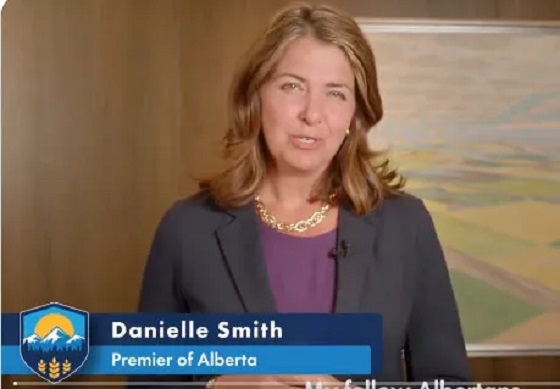
Section 33 Is a Legitimate Democratic Instrument
Tell everyone. There is no Charter right for a biological male to compete against females in women’s sports. Nor is there a constitutional right for children to be maimed and rendered sterile in service to self-proclaimed identities. And there is certainly no excuse for a government in Ottawa to interfere with provinces’ ability to defend women and girls from the fallout of sexual fetishism dressed in federalist drags.
Yet here we are.
Albertans are being invited to ask an important question. When rights collide, should we trust the flawed judgment of elected officials who face the people every few years, or surrender that authority to similarly flawed judges selected in near secrecy, immune to removal, and uninterested in the lived realities of the citizens they affect?
Section 33 of the Charter—the “notwithstanding clause”—exists for precisely this purpose. It was never a loophole. It was a constitutional safeguard demanded by Premiers like Alberta’s Peter Lougheed and Saskatchewan’s Allan Blakeney. It was their condition for agreeing to the Trudeau Charter in 1982, a shield for legislatures to retain sovereignty in cases where Ottawa-appointed, unelected courts would push too far into political life. It was a tool to defend provincial uniqueness against Ottawa’s homogenizing power.
Blakeney explained it plainly. Where judicial rulings lead to outcomes that might cause undue harm, for example, legislatures must retain the right to legislate, even if a court believes a Charter right has been breached. It was an elegant way to deal with the inevitable tension between rights adjudicated by judges and those protected by governments chosen by the people. It was a way to guarantee democracy over legal technocracy. The hysterical NDP machine will have people believe it is also the legislation of cruelty.

Section 33 is a temporary mechanism—suitable for five years, renewable only through re-legislation. Whatever the progressives say, it does not override or erase any rights. It cannot be used in secret, and any government that invokes it must defend its choice publicly. That is democratic accountability. The people can debate it (and we now where the contemporary left stands on debating), throw the government out, or demand that the law be changed, if they so choose.
This safeguard is now essential. Alberta is acting to protect the integrity of women’s sports and spaces. Who would be against protecting their daughters? Girls have lost competitions, lost scholarships, and in some cases been physically injured competing against males who claim to be female. These are not hypotheticals. They are real, measurable harms—harms progressive politicians and the courts are at times unwilling to recognize. Alberta’s proposed protections have drawn fierce opposition from progressive ideological activists and their allies in the press and the federal parliament, who now claim that such laws are contrary to the Charter. They seek to keep imposing without open debate the fiction that there is a Charter right for a biological male to compete against females in women’s sports.
There is no such right, and it doesn’t exist in the Charter. The Charter was not drafted to validate identity fantasies. It was not written to erase biological sex or enshrine the right of middle-aged men to force immigrant women to handle their genitals. It was not intended to give minors access to irreversible surgeries without the knowledge or consent of their parents. These things are being “read into” the Charter by tribunals and activist judges trained in Laurentian law schools with no democratic mandate, often under pressure from a woke federal government happy to let the courts advance policies it wants but is afraid to pass through Parliament.
Naheed Nenshi has made it clear where he stands. He bluntly opposes the use of Section 33 to protect Alberta women and girls. His allegiance is to the same cultural current that waddles through Ottawa. He speaks the language of progress but misses the point entirely. This isn’t about political posturing. It is about protecting girls and women from being injured, marginalized, and erased to satisfy the ideological demands of his political base.
It is about affirming the constitutional prerogative of Alberta’s legislature to protect its jurisdictional sphere. This is about facing anti-scientific postures with courage and preserving truth: men aren’t women, no matter how much ideological poultry progressive voodoo priests sacrifice to affirm it.
Ottawa’s interest in neutering Section 33 is not born of a deep commitment to human rights. It is a power play. The Trudeau-era delusional policies and its Carney-extended government see in Section 33 an obstacle to the court-driven social revolution it has vigorously encouraged. It wants provinces disarmed. Not through constitutional amendment, which would require tough negotiating, broad agreement and transparency, but through attrition—by shaming any use of the clause and suggesting that invoking it is inherently illegitimate. But that federal poodle won’t hunt in Alberta.
Ottawa already has the power to disallow provincial legislation outright under Section 90 of the BNA Act, 1867. That power—known as disallowance—allows the federal cabinet to kill any provincial law within a year of its passage. It has not been used since 1943, not because it is illegal, but because it is politically toxic. If Ottawa were to disallow an Alberta or Saskatchewan law protecting girls’ sports or parental rights, the backlash would be immediate and overwhelming. Progressives prefer pushing their ideological agendas in the dark, through political smoke curtains, behind close doors.
The federal government would rather pretend it lacks power while trying to strip away the strongest tool provinces have to protect their constitutional space. Section 33 is a scalpel compared to Ottawa’s sledgehammer, but it is a scalpel that Ottawa doesn’t want the provinces to use because it limits the power of the judges they appoint.
And let us not pretend this kind of judicial overreach is limited to social policy. Just a few years ago, the Supreme Court had the opportunity to strike down Canada’s tangle of interprovincial trade barriers in the Comeau case (2018). The question was straightforward: does Section 121 of the Constitution, which says goods “shall be admitted free” between provinces, actually mean what it says?
The Court answered no. It chose legal technicalities over the clear, economic intent of the BNA Act. In doing so, it upheld a regime of trade barriers that make Canada’s internal economy more balkanized. Donald Trump’s tariffs have nothing on the now court-preserved domestic trade barriers.
While the courts did not impose the regime of inter provincial blockages, it was the last to endorse it, weakening the country. Canadians cannot freely ship beer or wine across provincial lines. Businesses face duplicated regulations and supply chains carved up by provincial restrictions. The result is a sluggish, over-regulated economy that punishes ordinary citizens while rewarding monopolies and gatekeepers.
The Comeau decision was a betrayal of Confederation. It was also a reminder of the deeper problem: judges, however skilled, are not elected. That doesn’t make them bad people, but they are not accountable. The current Chief Justice, who condemned the truckers’ protest knowing legal cases would be coming active challenging the COVID lockdowns, openly advocated for stronger federal power. He is not neutral. And even if he were, he remains unaccountable to the people of Alberta. His political judgment carries no democratic legitimacy, yet it shapes the rules under which we are expected to live.
This is why Section 33 must be preserved—and used. But whether or not it is used legitimately in Alberta, it is for Albertans to determine. Not Ottawa. The threat isn’t coming from Alberta’s legislature—it’s coming from courts and bureaucrats choosing to advance male fetish desire as sacred while erasing female safety.
Premier Danielle Smith understands this. So does Premier Scott Moe. That is not judicial defiance. That is democratic responsibility. When Ottawa and the NDP opposition in both provinces seek to override parental rights, deny biology, and impose ideology on children, women, and families, it is the perfect time for legislatures to act. And if not legislatures, then who?
Albertans should not have to ask permission from Ottawa to protect their daughters. They should not have to wait years for a judge’s approval to define women’s places and spaces. They should not be ruled by edicts from individuals who have never faced a voter in their lives.
Section 33 is a lawful democratic instrument. It exists to ensure that provinces do not lose control over essential provincial matters. Alberta is using it for precisely the reason it was designed—to uphold the will of its people in the face of potential judicial activism that favours anti-scientific ideology above reality.
No permission is required. Alberta will protect its daughters.
Haultain Research is a reader-supported publication.
To receive new posts and support our work, consider becoming a free or paid subscriber.
-
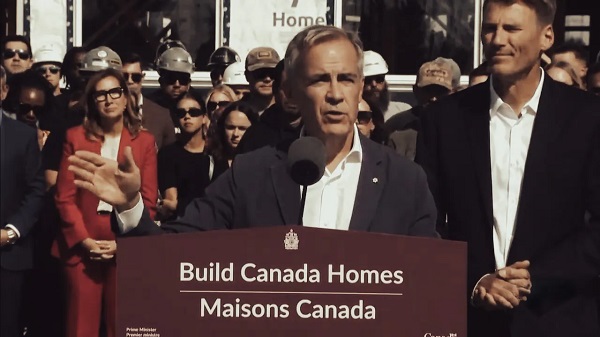
 Business10 hours ago
Business10 hours agoCarney Admits Deficit Will Top $61.9 Billion, Unveils New Housing Bureaucracy
-
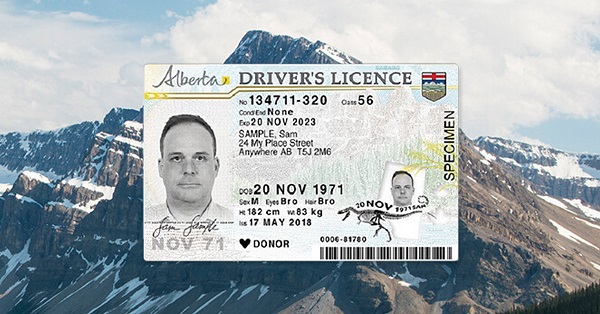
 Alberta7 hours ago
Alberta7 hours agoAlberta first to add citizenship to licenses
-

 Business9 hours ago
Business9 hours agoCarney’s Ethics Test: Opposition MP’s To Challenge Prime Minister’s Financial Ties to China
-
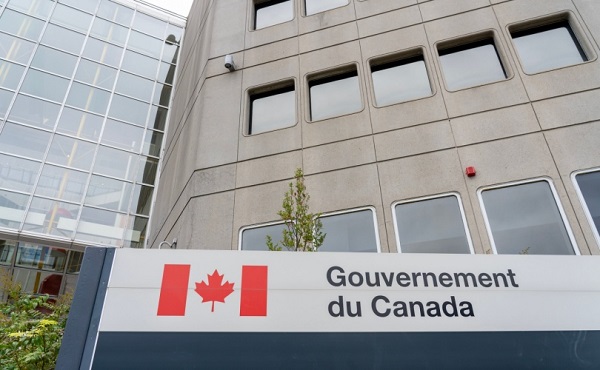
 Business8 hours ago
Business8 hours agoAttrition doesn’t go far enough, taxpayers need real cuts
-

 Addictions2 days ago
Addictions2 days agoNo, Addicts Shouldn’t Make Drug Policy
-
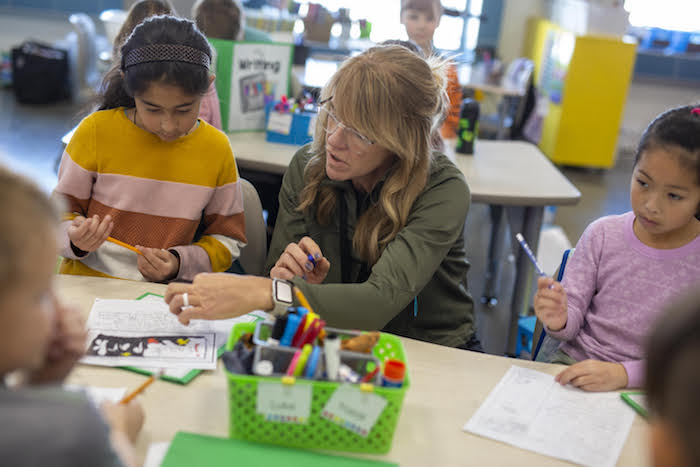
 Alberta2 days ago
Alberta2 days agoEducation negotiations update: Minister Horner
-

 COVID-192 days ago
COVID-192 days agoNew Study Obliterates the “Millions Saved” COVID Shot Myth
-
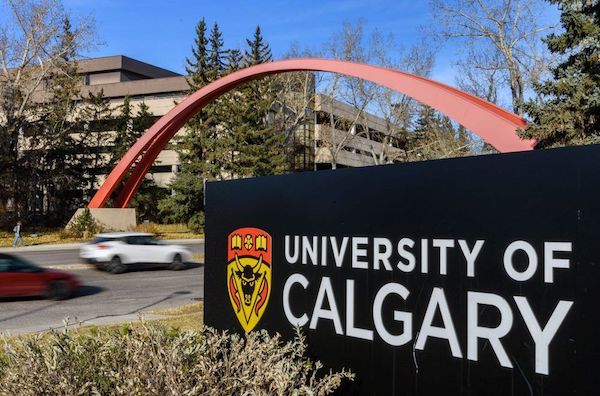
 Business2 days ago
Business2 days agoThe Real Reason Tuition Keeps Going Up at Canada’s Universities





